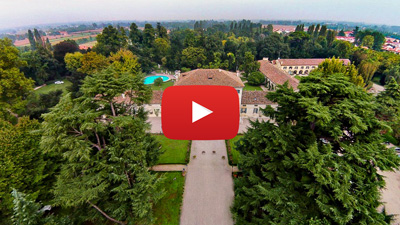The main route of the Strada del Prosecco wanted to trace, as far as possible, the original route inaugurated in 1966 for its undoubted historical and cultural values, but alongside it with a return route that allows the visitor to return by another way start point.
Our journey begins ideally from the city of Conegliano, which offers the opportunity for a walk through the porticoes of Contrada Grande, to admire the facades of noble palaces, the extraordinary beauty of the frescoes on the facade of the Duomo and in the background the Castle.
It is right at the feet of the latter, at the historic Cerletti Wine Institute, that we take the Wine Route. Before, however, a visit to the nineteenth-century and frescoed Bottega del Vino of the Wine School is recommended, subject to booking.
From here we head towards Collabrigo which offers beautiful views of the surrounding hills, dotted with vineyards and small wooded patches. The eighteenth-century villa Ghin Montalban is also interesting.
Then continue towards Rua di San Pietro di Feletto and its seventeenth-century Camaldolese hermitage (seat of the Town Hall), to get to San Pietro di Feletto where stands the splendid Pieve of the twelfth century. of exquisite and elegant Romanesque lines, absolutely not to be missed.
The next stretch of road unravels up to Refrontolo between a succession of evocative views of the Felettano hills, while a short detour can lead to the enchanting Molinetto della Croda, embedded in the rock.
Once in Solighetto, we discover the eighteenth-century Villa Brandolini, home of the Consorzio Tutela del Vino Prosecco Conegliano Valdobbiadene Docg and a place that hosts various cultural events. Not far from Soligo is the small church of Santa Maria Nova, dating back to the 14th century, like its frescoes. A short hike leads to the small temple of San Gallo on the homonymous hill where you can enjoy an extraordinary panoramic view of the underlying Piave valley.
After passing Farra di Soligo, you arrive at Col San Martino with its medieval Towers of Credazzo, evidence of the Longobard presence, and the authentic architectural and artistic jewel of the Church of San Vigilio, nestled on the hills and reachable by a few minutes walk.
Sino a Colbertaldo you can enjoy a landscape still largely intact and designed by small hilly cones, poetically defined snails, often punctuated by the ancient ‘Casére’ where the peasants still recover the hay and tools.
Our journey continues towards the North, plunging among endless vineyards to reach what is the cru par excellence of the Docg area of Prosecco Superiore, that is the area of Cartizze from which we obtain the eponymous precious sparkling wine.
From the bottom, heading towards the Follo and then going up towards Santo Stefano, you can admire some of the most beautiful views of the Prosecco Superiore DOCG hills, whose uninterrupted vineyards leave space only on the summits of the hills to the renowned chestnut woods. After passing Santo Stefano and San Pietro di Barbozza (home of the Confraternity of Valdobbiadene), we finally arrive at Valdobbiadene where our outward journey ends without a glance at the main square surrounded by neoclassical buildings, and not far from the delightful church of San Gregorio del ‘600, used, thanks to its excellent acoustics, for musical and choral events.
From Valdobbiadene we resume our journey, retracing our steps in the direction of Guia; a journey that presents some of the most evocative and impressive lookouts on the hills below and on their uninterrupted vineyards.
We are moving along the S.P. 123 in the direction of Campea immersed in a still well preserved rural landscape. After crossing the Soligo river and passing the SP4, at Pedeguarda you quickly climb towards Farrò in an environment that is often new because the vineyards, often steep and steep – not to be missed in this sense the view of Rolle – open or act as counterbalance to thick woods.
Leaving Arfanta behind, we head towards Tarzo and Corbanese first, and then Cozzuolo, Carpesica, Ogliano along a stretch of road characterized by interesting hydraulic-agrarian works such as the ciglioni, and from profiling on the horizon of the ancient villages and their bell towers . The journey starts at its conclusion through the center of Conegliano and the arrival at the Istituto Cerletti.
La Primavera del Prosecco (link)

 Italiano
Italiano Español
Español

